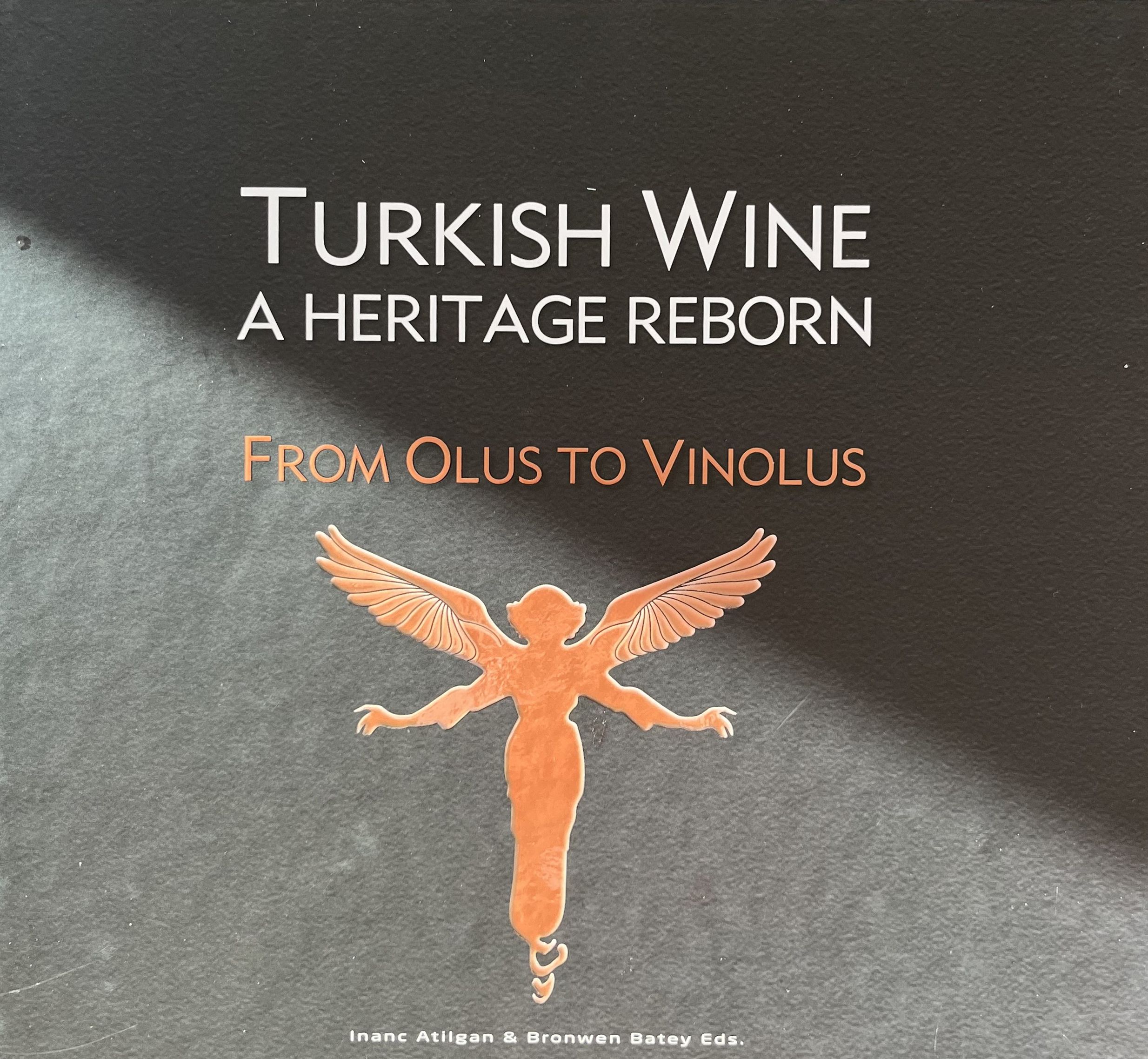Even though I’ve worked in PR and marketing for much of my adult life, I’ve never been very good at banging my own drum.
So having co-edited the inspirational wine book: Turkish Wine, A Heritage Reborn: From Olus to Vinolus, this is a shout out to all the people that I was so fortunate to work with to produce this book - the authors, my co-editor and the incredible woman winemaker at the heart of it all.
Co-editing this book was a fascinating (and at many times eye opening) journey for me - I knew Türkiye made wine but was it any good and if so, why have we not heard much about it?
This book is so much more than a narrative about wine. Through the personal and unique perspectives of the authors who generously contributed to this book, the 16 chapters take readers on a journey exploring Türkiye’s age-old wine history, through to the evolution and challenges of its modern wine culture. It’s also a homage to the pioneering winemaker, Oluş Molu, and a nod to the passionate, sustainable boutique Turkish winemakers of today, each delicately balancing a respect for their heritage with a hunger (or thirst) for innovation and endorsement. The overall message of these contributors centres on the profound cultural, historical, and economic significance of Turkish wine, being revived and transformed by visionary figures such as Oluş Molu.
For various reasons, many of which are revealed within the pages of the book, Türkiye has been under the radar as a premium wine making region – even as a millennia-old wine production, it’s considered an emerging wine region. Turkish Wine, A Heritage Reborn: From Olus to Vinolus is a celebration of the country's dynamic wine culture and tradition through the lens of one of its leading women winemakers - Oluş Molu - who’s own wine brand sets a high bar for Türkiye’s premium, boutique wine industry.
Whether you’ve never tried Turkish wines, or even knew the country made wine (and quality wine at that); or perhaps you’re interested in history, organic farming, discovering new grape varieties or an avid supporter of women winemakers, Turkish Wine, A Heritage Reborn: From Olus to Vinolus is a book that is as fresh and original as it is educational.
A few personal wow-inducing insights from the book:
· Southeast Türkiye (Anatolia) is thought to be the cradle of the vine. According to recent research, findings show traces of the cultivated vine (Vitis vinifera) and the wild vine (Vitis sylvestris) dating back to 6,000 BC.
· The Hittite Empire which reached its peak between 1,450 and 1,200 BC, left behind thousands of written tablets testifying to its wine culture – including the first to create hundreds of registered wine laws.
· As one of the largest producers of table grapes, Türkiye is ranked 5th in the world in terms of total area dedicated to vines. Yet only around 3% of those grapes are made into wine (low compared to the average of 45% in other wine regions).
· Around 185 producers contribute to approximately 80 million litres of wine (or approximately 100 million bottles) each year in Türkiye, most of which is consumed domestically. At its height in 1904, Türkiye was producing 340 million litres/ 450 million bottles of wine in a year, exporting a sizeable proportion to Europe, which had been devasted by the phylloxera crisis.
· Türkiye is home to the largest and most varied number of indigenous grape varieties on the planet- at around 1,400. Approximately 60 varieties are made into wine today. Exciting grapes such as Emir, Öküzgözü, Boğazkere, Kalecik Karası, and Narince reflect a unique sense of terroir and distinct flavour profiles.
· According to research, one grape variety from Anatolia is thought to be the parent of 80 European varieties, including Chardonnay, Gamay and Riesling - Gouais Blanc - baptized as the “grape casanova”.
· Due to challenges around promoting wine in Türkiye, producers have turned to wine tourism – now playing a major role in shaping Türkiye’s image as a wine region.
· The story of the Molu family reflects Türkiye’s broader wine industry transformation, with Oluş pioneering organic agriculture and contributing significantly to modern, boutique Turkish viticulture.
· Türkiye’s wine regions are split broadly across the country offering different micro and macro climates – these include the high massif of Thrace and Marmara (in the northwestern corner near Istanbul), the touristy Aegean Region (in the west and southwest of the country), the rocky Black Sea Region (in the north); Anatolia (the largest in the centre of the country, near Ankara - volcanic, sandy soils featuring a continental climate influenced by altitude, with ungrafted goblet trained vines – home to Cappadocia and Kayseri (and Vinolus); and the warmer southern Mediterranean region.
· Grapes grown in Türkiye are a mix of internationally-renowned and local varieties making white, rosé and red wine, as well as sweet, sparkling and pet-nat styles. International varieties are regularly blended with indigenous grapes.
· The names of the key indigenous grapes are beautifully descriptive, and help you to recall their profiles, for example the white variety, Emir means leader and it’s steely and savoury, with a mineral finish, similar to a Chablis but more fruit forward. Another white variety, Narince means delicate, and it’s more aromatic with a fresh acidity, similar to a Pinot Grigio; whilst Boğazkere, lives up to its translation as the ‘throat scratcher’ with its intense tannic structure and black fruit profile, similar to a Tannat.
As more consumers around the world seek out sustainable, artisanal wines made from unusual, indigenous grapes, the synergy between these position Türkiye as a rising star in the global wine industry.
Thank you to the team behind this original, fascinating book for introducing me to one of the world’s most exciting wine regions - one with a fascinating story to tell, at the hands of the most warm, welcoming producers of premium wines that are just waiting to be tasted.
Follow the book as it launches across the world in 2025 along with insights and fun facts about this oldest yet little known wine region @Turkishwineaheritagereborn (on Instagram).
📚 Published in Austria by Wieser - https://www.wieser-verlag.com/buecher/turkish-wine-a-heritage-reborn/




